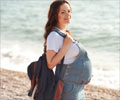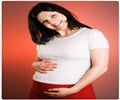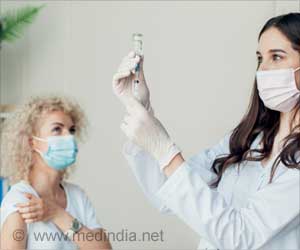Frequent use of indoor insecticide spray during pregnancy increased risk of neonatal hyperbilirubinemia (jaundice) requiring phototherapy, reports a new study.

‘Maternal exposure to pesticides during pregnancy may cause oxidative hemolysis leading to neonatal hyperbilirubinemia.
’





This study found that frequent use of insecticide spray indoors resulted in 1.21 times higher incidence of neonatal hyperbilirubinemia requiring phototherapy. On the other hand, when a spray or lotion-type insect repellent was used frequently, the incidence was 0.70 times lower. No correlation was observed between neonatal hyperbilirubinemia requiring treatment regarding the use of insect repellents for clothing, mosquito coils, electric mosquito repellents, pesticides, and pesticides for gardening. Exposure of insecticides and insect repellent at the end of pregnancy was not evaluated in this study, nor was data collected for blood concentration of insecticides and insect repellents. In addition, the effect of slightly different phototherapy implementation standards for neonatal hyperbilirubinemia among medical institutions has not been examined. It is necessary to consider these issues in the future. *The content of this research is the opinion of the author, not the views of the Ministry of the Environment and the National Institute for Environmental Studies.
What is The Japan Environment and Children's Study?
The Japan Environment and Children's Study (JECS) has been conducted since 2010 to clarify the effects of exposure to chemical substances on the health of children during the fetal and childhood stages. This is a large-scale, long-term birth cohort survey of 100,000 sets of parents and children nationwide. In addition to collecting, storing, and analyzing biological samples such as maternal blood, umbilical cord blood, and breast milk, the study will follow up on the participating children until they are 13 years old to clarify the environmental factors that affect their health.
JECS includes a period of five years for data analysis and is scheduled to be completed in the year 2032. The National Institute for Environmental Studies is the core center of research, the National Center for Child Health and Development functions as a medical support center, and 15 universities were selected for unit centers to work as regional survey bases.
Advertisement
High levels of serum bilirubin cause jaundice. Jaundice is one of the most common medical symptoms during the neonatal period. About 60% of children have overt jaundice. The frequency of jaundice in the neonatal period varies by race, and Asians are twice as likely as Caucasians and three times more likely than blacks to exhibit jaundice. Hyperbilirubinemia is a risk factor for nuclear jaundice (kernicterus) and cerebral palsy, and Asians are considered to have a higher risk of nuclear jaundice than other races.
Advertisement
Therefore, this study investigated the effect of the frequency of use of insecticides and insect repellents during pregnancy in mothers on the development of neonatal hyperbilirubinemia that required phototherapy.
Research content and results
This study used the data of approximately 100,000 pregnant women fixed in April of 2016. Of these, data of 61,751 women were eventually analyzed, which excluded data of stillbirths, miscarriages, infants with a birth weight less than 2500g, and those missing data in factors that are considered relevant. Information also included maternal use of insect repellents for clothes during pregnancy, indoor spray insecticides, mosquito coil, electric mosquito repellents, pesticides, and insecticides for gardening, spray, or lotion type insect repellents.
Of these, 5,985 (9.7%) received phototherapy for neonatal hyperbilirubinemia. Answers to the self-administered questionnaires conducted during the second and third trimesters of pregnancy were used as an indicator for the frequency of maternal exposure to insecticides and insect repellents. 36,610 (59.2%) mothers used insect repellents for clothes during pregnancy, 20,352 (33.0%) used indoor spray insecticides, and 19,518 (31.6%) used mosquito coils and electric mosquito traps. 5,333 (8.6%) used herbicides and pesticides for gardening, and 15,309 (24.8%) used to spray or lotion type insect repellent.
Potential confounding factors associated with neonatal hyperbilirubinemia include the age of the expectant woman, the gender of the baby, gestational age, birth weight, presence of birth asphyxia, maternal complications during pregnancy, obstetric complications, household income, and the mother's education history. Logistic regression analysis was used considering these confounding factors, and the study examined the relationship between the frequency of use of insecticides or insect repellents during pregnancy and the incidence of neonatal hyperbilirubinemia that required phototherapy.
As a result, it was found that mothers who used spray insecticides indoors more than several times a week during pregnancy gave birth to babies with neonatal hyperbilirubinemia, which requires phototherapy at a rate 1.21 times higher than in a group of mothers who never used insecticide or repellents during pregnancy. Regarding the use of other insect repellants, a high frequency of use was not clearly associated with the occurrence of neonatal hyperbilirubinemia requiring phototherapy. On the other hand, the use of spray or lotion type insect repellent, neonatal hyperbilirubinemia requiring phototherapy is less likely to occur in the group where the frequency of use is more than several times a week compared to the group which is not used at all. The result is as low as 0.70 times. A similar tendency was observed when low birth weight infants with a birth weight of less than 2,500 g were also analyzed.
Future implications
This is the first study to examine the association between the incidence of neonatal hyperbilirubinemia requiring treatment and maternal exposure to insecticides and insect repellents during pregnancy.
The results of this study indicate that neonatal hyperbilirubinemia, which requires phototherapy, is more likely to occur in infants born to mothers who use spray insecticide indoors more often than several times a week during pregnancy compared to those who did not. The result was 1.21 times more likely to develop neonatal hyperbilirubinemia. On the other hand, a mechanism that may explain the reason why the frequent use of spray or lotion type insect repellents resulted in a lower probability of developing neonatal hyperbilirubinemia requiring phototherapy is unknown.
In this study, no information on exposure of mothers to insecticides or insect repellant was obtained as objective data such as blood concentration. In addition, the survey period is in the middle and late trimesters. It has not been possible to accurately evaluate the exposure during the last trimester of pregnancy immediately before delivery, which is thought to have the most effect on hyperbilirubinemia in newborns. In addition, the level of serum bilirubin used as the phototherapy criteria at each medical institution may be different, and these issues need to be considered.
JECS investigates not only chemical substances but also environmental factors, genetic factors, social factors, lifestyle factors. It is expected that more information will be available on the relationship between these factors and neonatal hyperbilirubinemia. Therefore, it is necessary to examine the relationship between exposure to insecticides and insect repellents and the occurrence of neonatal hyperbilirubinemia by comprehensively considering the knowledge of the relationship with factors other than these chemical substances. It is hoped that environmental factors such as chemical substances that affect the growth and health of children will continue to be clarified.
Source-Eurekalert















